Flying aircraft carriers show up in steampunk, dieselpunk and atompunk fiction so often, we can consider them a genre trope. From Castle Wulfenbach in Girl Genius to the British aircraft carriers in Sky Captain and the World of Tomorrow to the helicarriers of S.H.I.E.L.D., here is a look at these behemoths of the sky.
Flying aircraft carriers have a basis in reality. A few World War I-era British airships carried biplanes that could defend the mothership from attack. The United States Navy experimented with a similar “parasite aircraft” program in the 1930s.
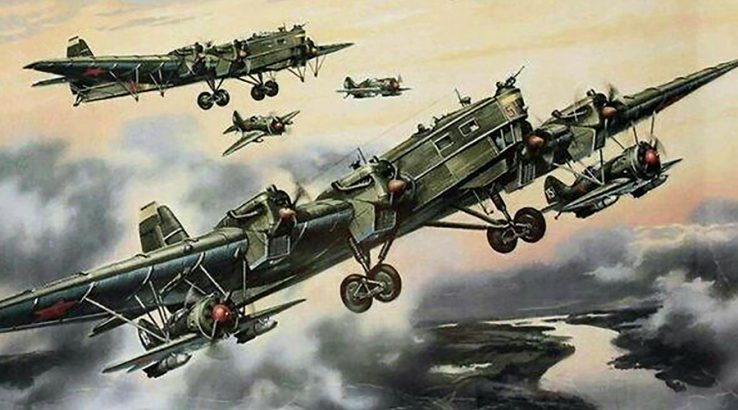
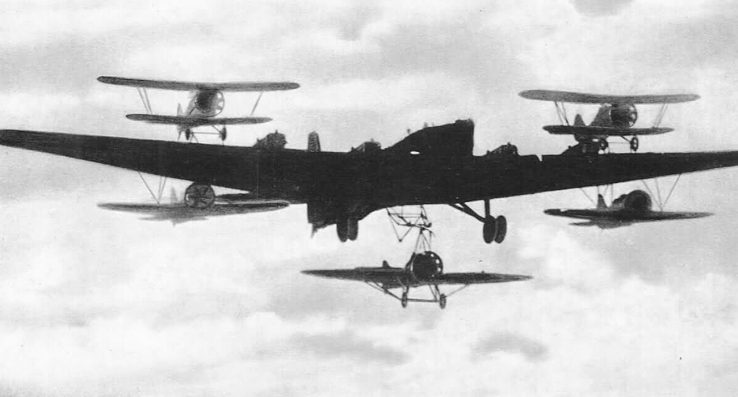

So did the Soviet Union. The Zveno project put small fighter planes on the wings of Tupolev TB-1 and TB-3 bombers. This configuration was used in Romania in the early days of World War II.
Rear Admiral William W. Moffett of the United States Navy had written for Popular Science in 1923 that airships carrying airplanes, like “lifeboats on ocean-going vessels,” weren’t far away.
He pointed out that airplanes had already been carried, launched and picked up by airships.
The future airship, developed for naval use, will carry a sting that will make it one of the most formidable contenders for supremacy of the air, sea and earth that has ever been conceived.
Moffett predicted that airships would carry a dozen planes to protect it against attack, “and in addition will mount a battery of guns that will command the respect of any enemy marauder.”
He didn’t see much difficulty for planes taking off:
The launching of them is merely a matter of pushing the planes off into space, where they can recover themselves with the ease of a bird thrown into the air.
The United States Navy in fact built two such airships, Akron and Macon, launched in 1931 and 1933, respectively. They were the largest helium-filled airships ever built. (The hydrogen-filled Graf Zeppelin II and Hindenburg were 5 meters taller and slightly more voluminous.) Both the American airships were lost in bad weather.
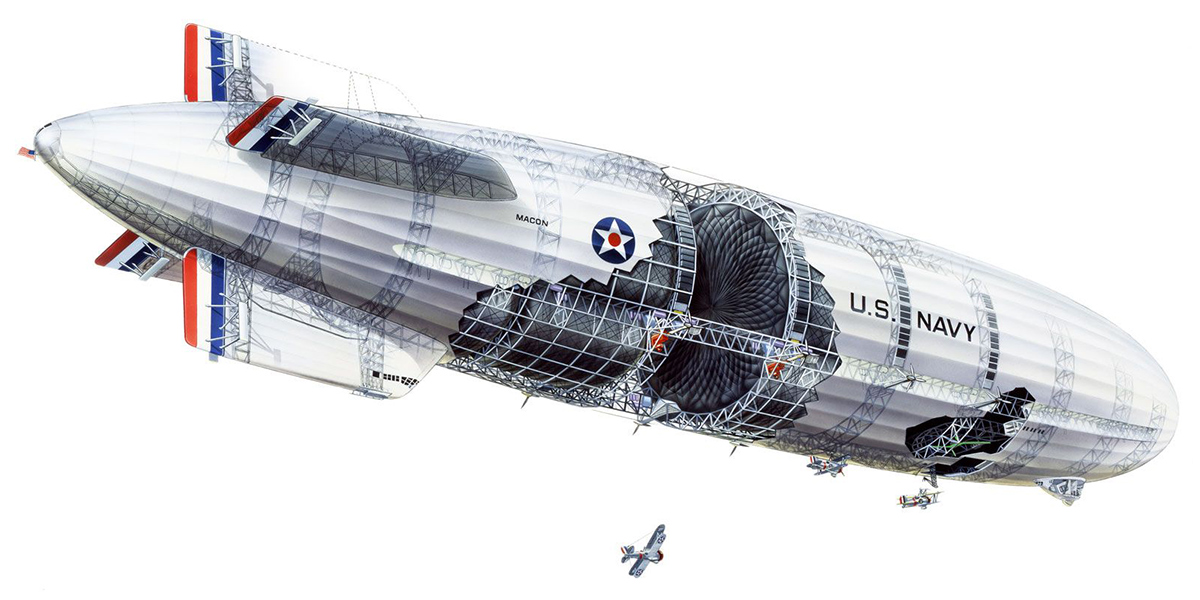
Another proposal, as reported in Modern Mechanix in October 1934, was to use a landing strip that could double as solar panel:
The ordinary cigar-shaped dirigible would in effect have a slice taken from the upper half of her gas bag. This would provide a large deck on which could be mounted solar photo cells, an airplane runway and a hangar. Planes could land on the dirigible, floating over the sea, to refuel for transocean passenger service.
Goodyear advertised a “flying carrier for warplanes” in the May 1942 edition of Popular Mechanics that it said could cruise at a speed of 50 nautical miles per hour, “more than twice the speed of surface aircraft carriers.”
Immune, of course, to submarine attack, the airship would be expected to operate beyond the range of lang-based enemy planes and at altitudes above the effective gun range of surface vessels.
A year later, Popular Science reported on a design by Horace Chapman Young and Eric Langlands that could double as passenger ship and flying aircraft carrier.
The Airwing, as the craft is called, is built as a flying wing with space within its single-wing body for helium, fuel, crew and payload and tunnels in which propellers or blowers operate.
The idea was that the plane would pull and push itself forward — “pulling through suction caused by a semivacuum created in front, and driven by exhaust pressure at the rear.” The helium would give it additional lifting power.
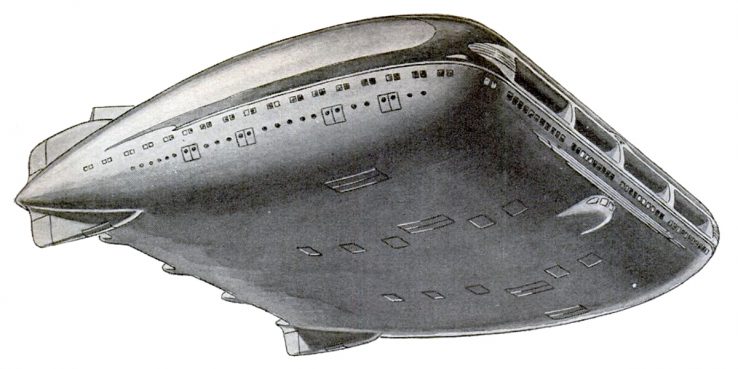
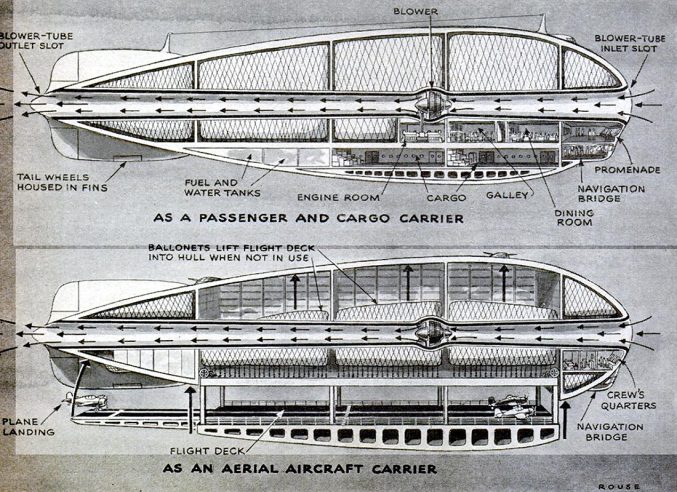
A more serious study was carried out by Lockheed in the 1950s. Its CL-1201 was meant to be a giant nuclear-powered aircraft carrier with a whole string of jets under its wing. It would have been the largest plane ever built — but it never was.
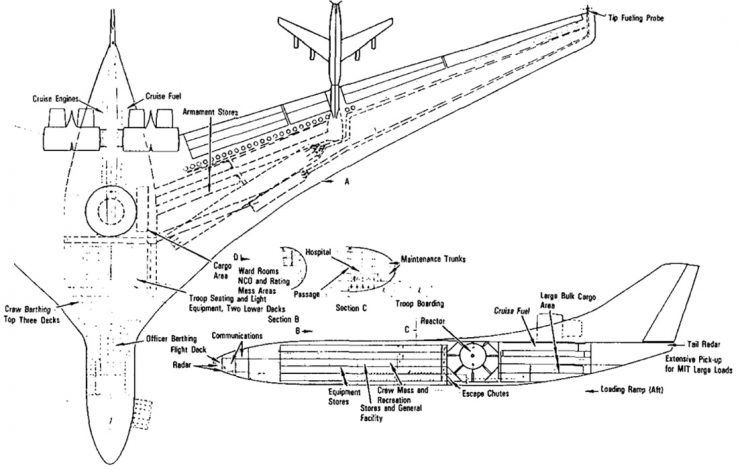
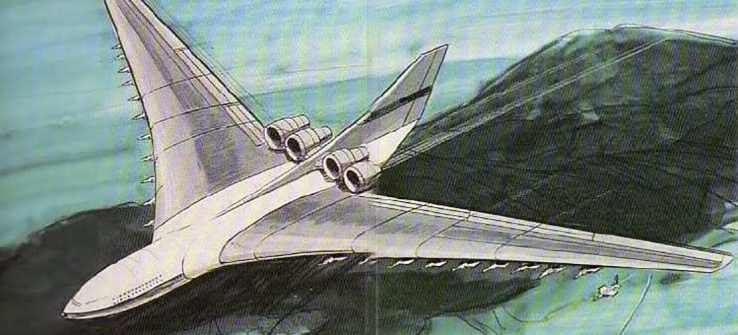
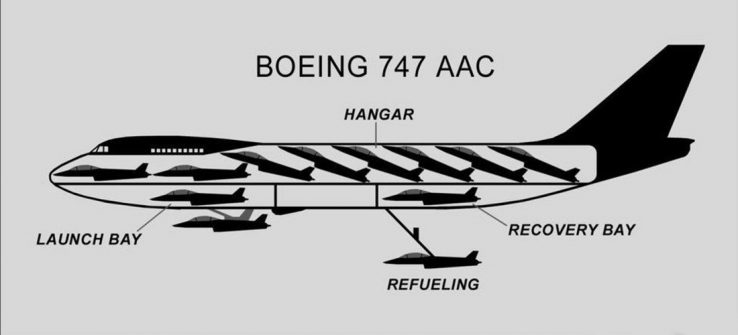
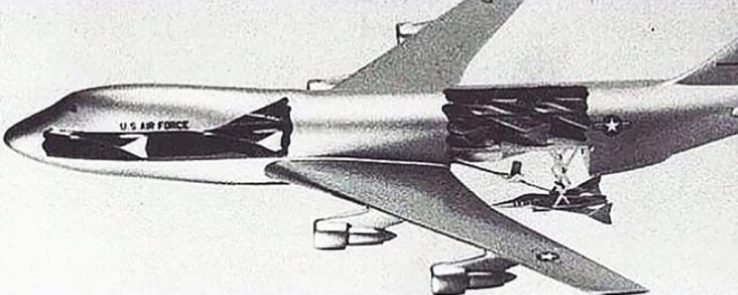
In the early 1970s, the United States Air Force studied the possibility of converting a Boeing 747 into a flying aircraft carrier. The problem was developing fighter jets small enough to fit inside.
Such practicalities don’t bother us ‘punks. Let’s move on to the fictional examples!
The best-known is S.H.I.E.L.D.’s helicarrier from the Marvel comic books and movies. It has gone through various iterations, from literally a flying ship to the rotor-blade version of the most recent cinematic adaptations.
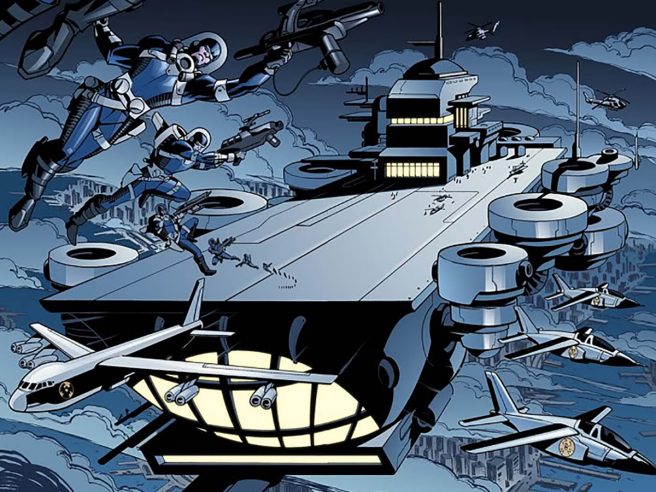
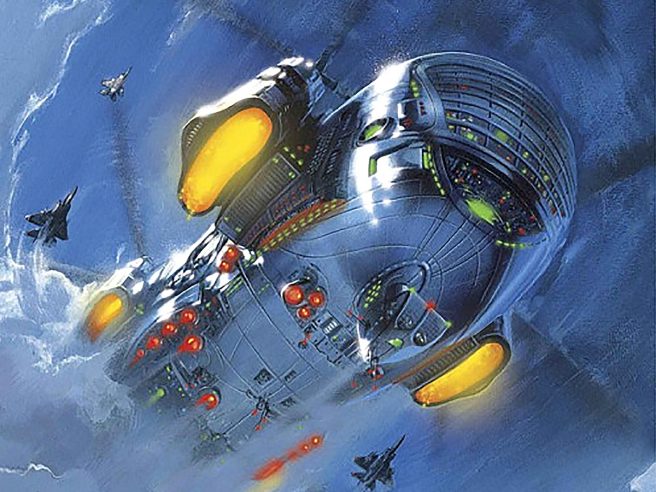
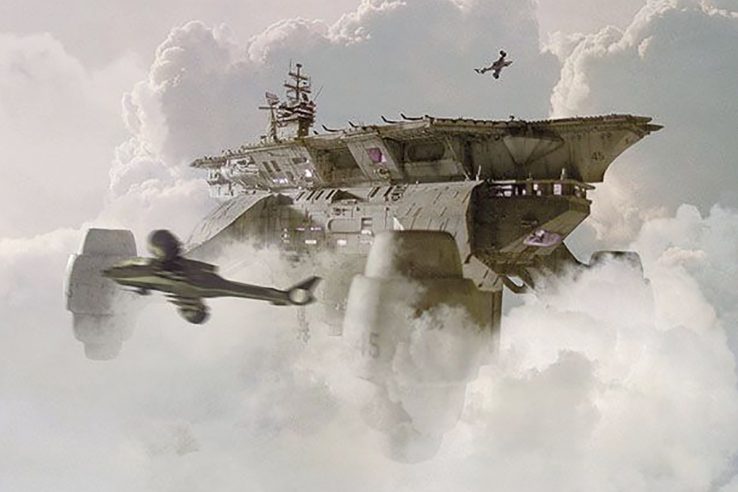
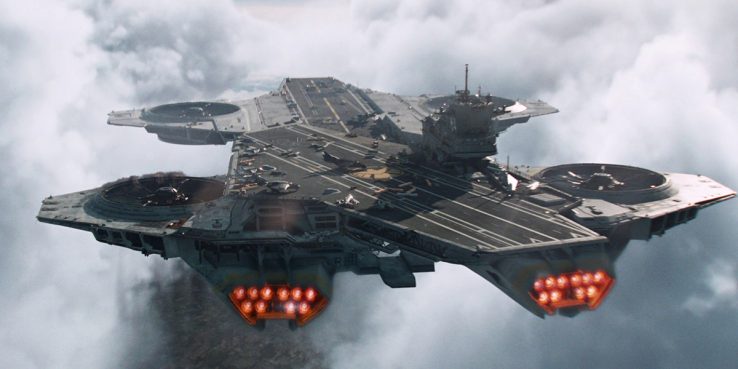
Spectrum, the international security agency in Captain Scarlet and the Mysterons (1967-68), has a similar skyborne headquarters called Cloudbase.
So does the United Nations Intelligence Taskforce (UNIT) in Doctor Who. Its flying aircraft carrier is called the Valiant.
Peter McKinstry’s concept art for the Valiant looks remarkably similar to Kevin Conran’s for Sky Captain and the World of Tomorrow (2004). I’m not sure if that was deliberate.
The carriers of Sky Captain ended up looking differently and they do not belong to any international organization. Rather, because the United Kingdom was still the world’s premier sea power in the real-world 1930s, in the film they are part of the British fleet.
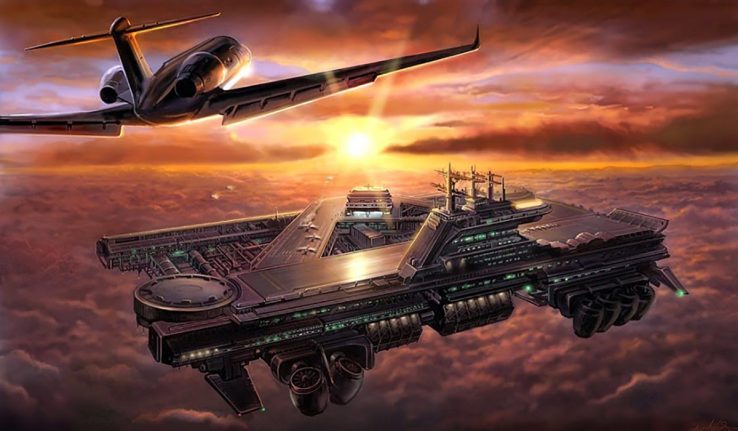

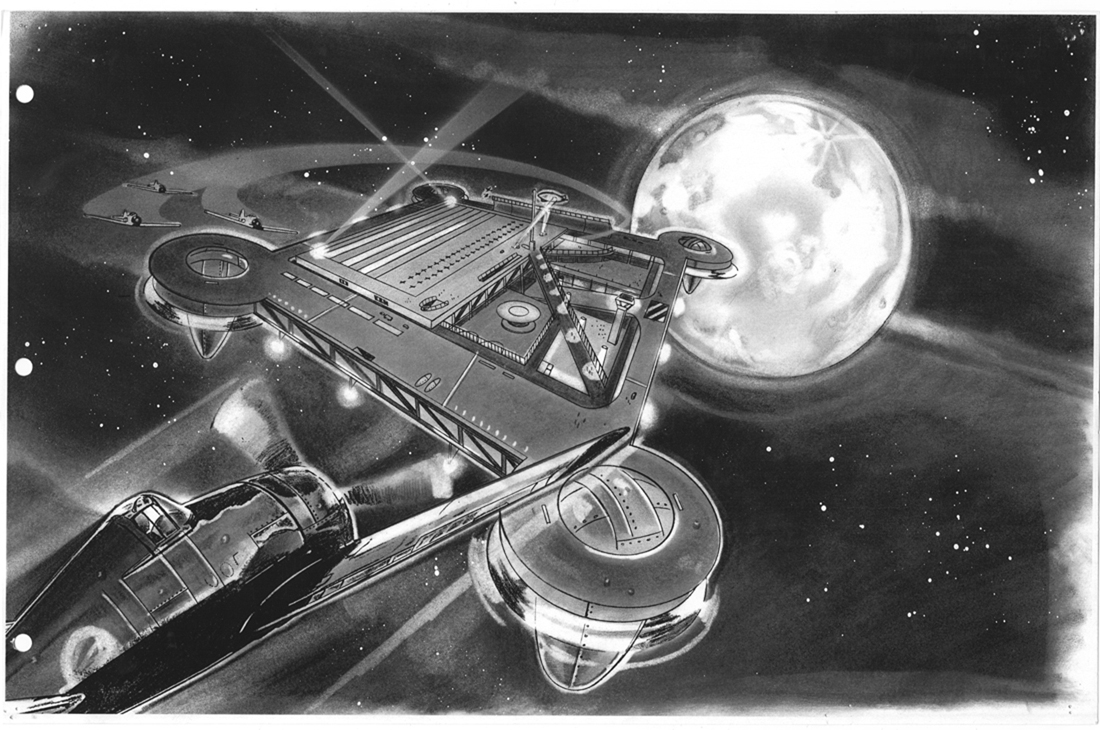
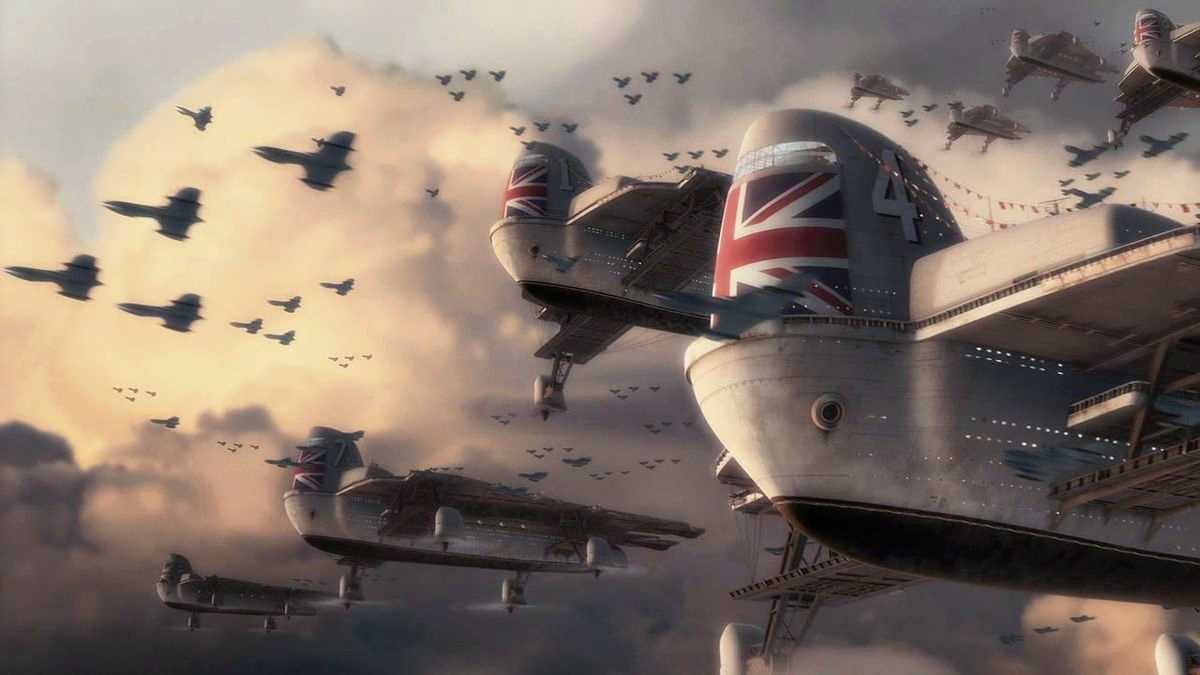
The French-Canadian animation series Skyland (2005-07) features two flying aircraft carriers, the Saint Nazaire and the Calisto. Both carry ten fighter aircraft called Mosquitos. Their enemies, the dictatorial Sphere, operate a vertical mothership called The Monolith, which carries both smaller fighters and troops.
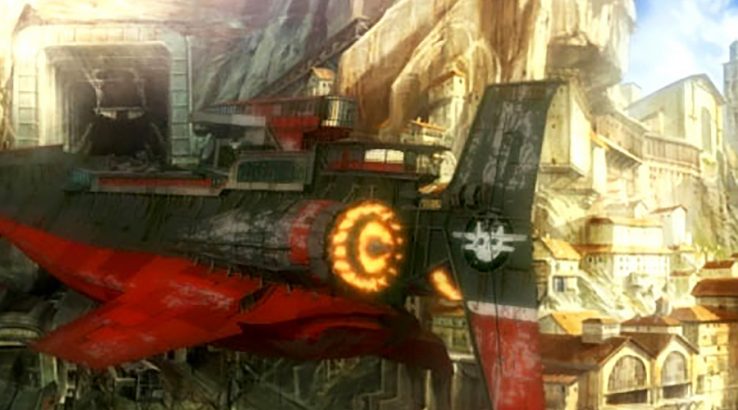
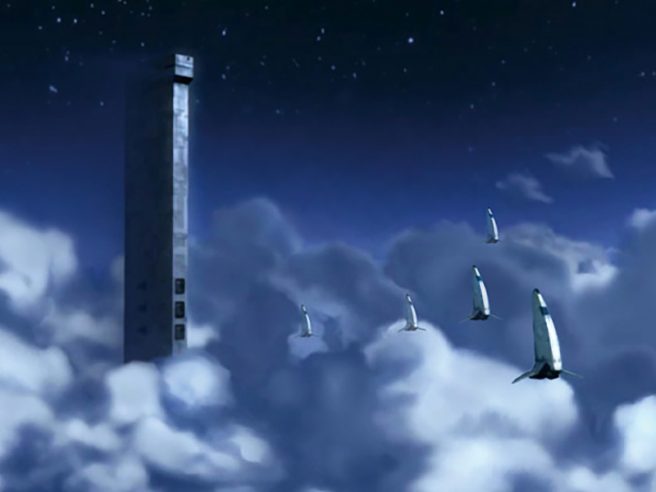
Steampunk fans will be familiar with Girl Genius, Phil and Kaja Foglio’s long-running webcomic. The series has not a flying aircraft carrier per se but a flying fortress, called Castle Wulfenbach, that can hold entire airships in its vast hangar bays. It is the headquarters of Baron Klaus Wulfenbach, the tyrant of Europe.
In Iron Sky (2012, our review here), the Nazis fly similarly oversized zeppelins, except these can go into space and carry a squadron of flying discs.
A smaller version can be found in the 2008 game Turning Point: Fall of Liberty, where a German Flugzeugträger carries a complement of fighter jets and smaller patrol zeppelins.
In the world of The Magnificent Kotobuki (2019), airships ferry goods between distant parts of the world. Each carries a squadron of fighter planes in its belly to defend against sky pirates.
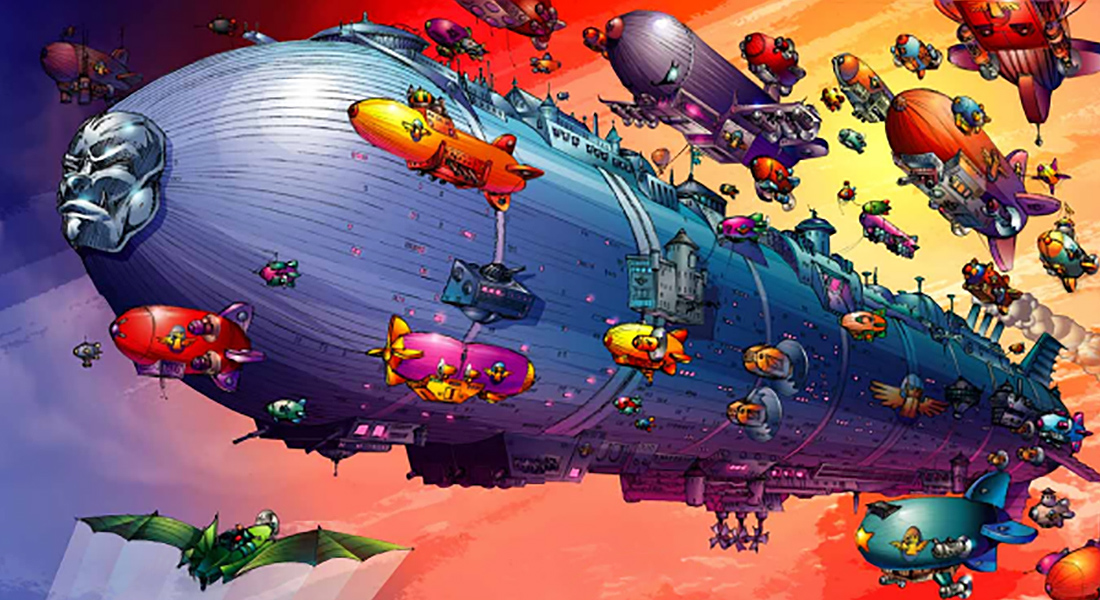
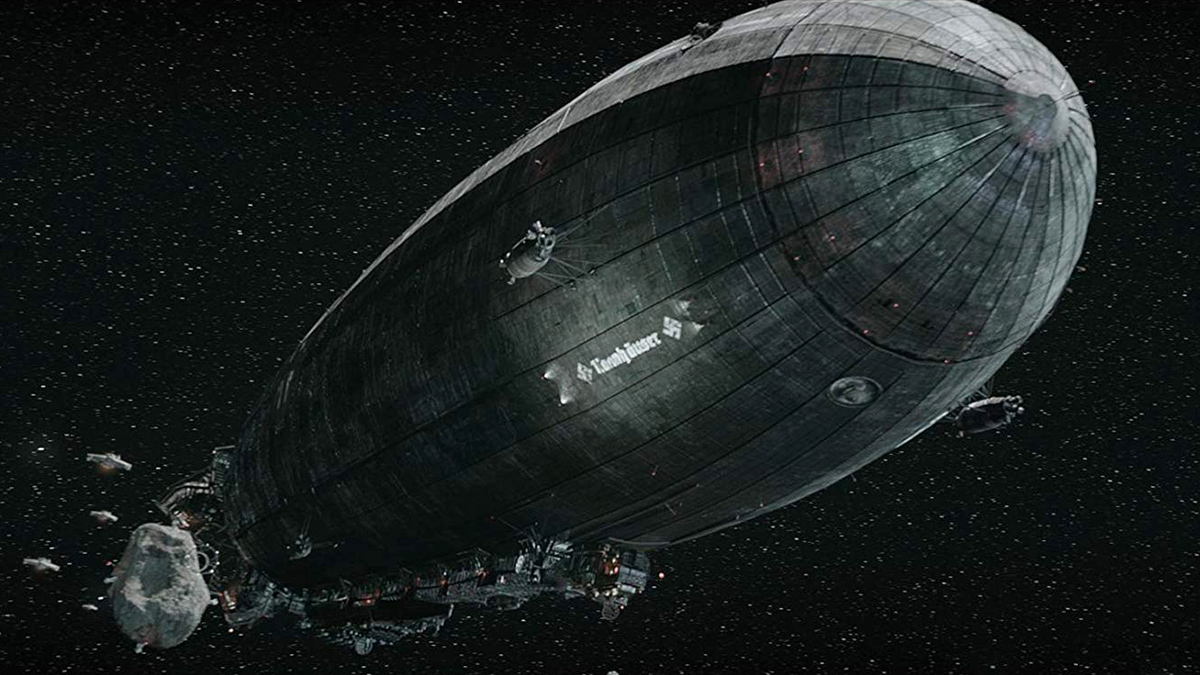
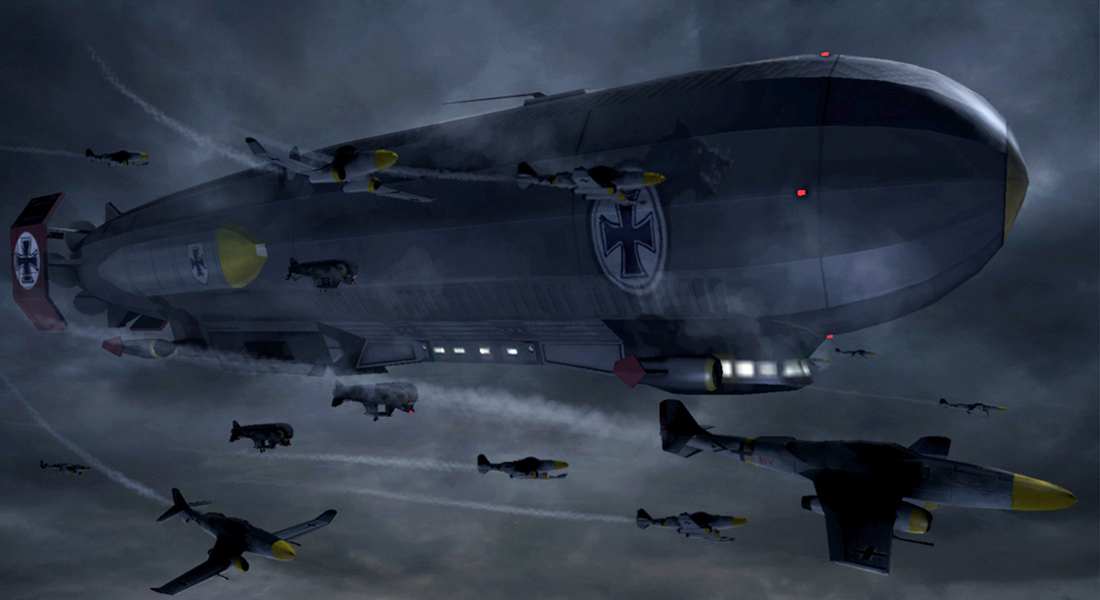
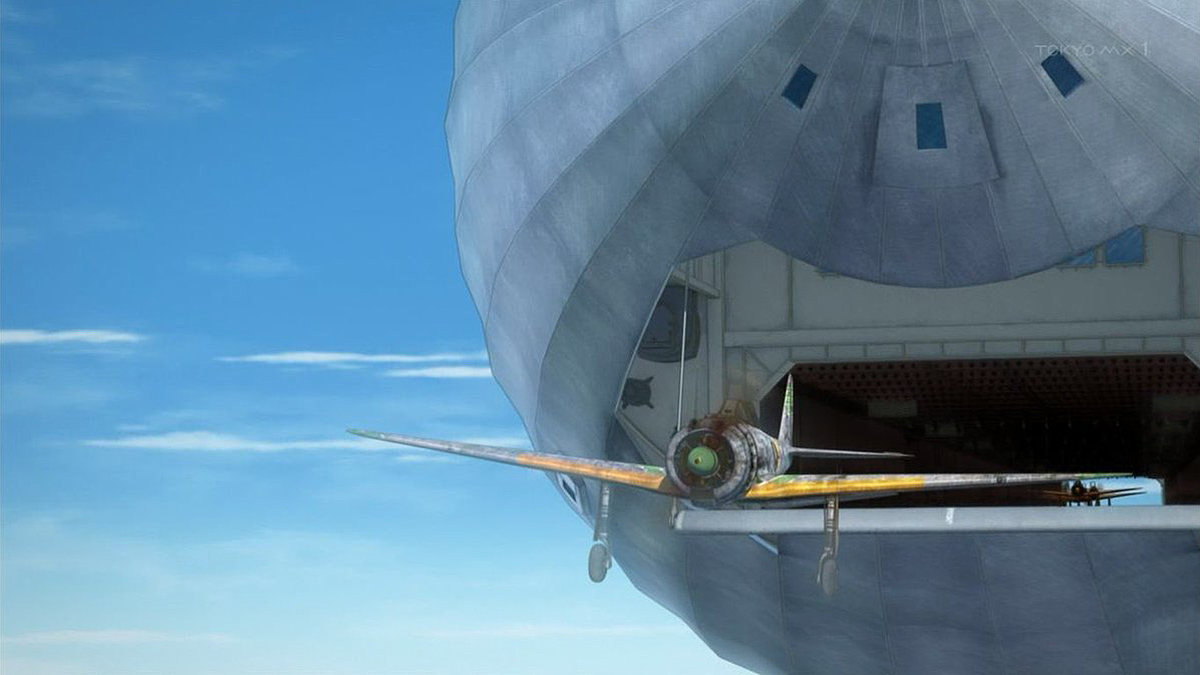
The Ace Combat series is extremely fond of flying aircraft carriers. The games start off with the fairly conventional-looking UI-4053 Sphyrna in Ace Combat 3: Electrosphere (1999), an airship with a hangar deck. It ups the ante in Ace Combat 6: Fires of Liberation (2007) with the Aigaion, a kilometer-wide flying wing with an even bigger hangar deck. The next game, Ace Combat 7: Skies Unknown (2019), has a propeller aircraft not unlike the flying wing in Captain America: The First Avenger (2011) that can carry eighty attack drones.
Saints Row: The Third (2011) features the Daedalus, a mobile aircraft carrier similar to some interpretations of the S.H.I.E.L.D. helicarrier.
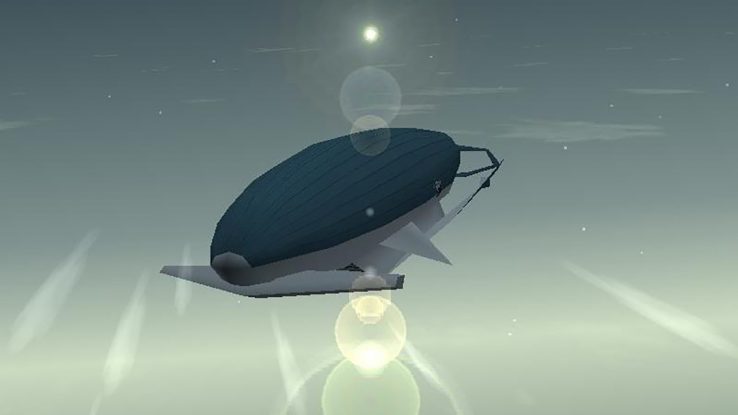
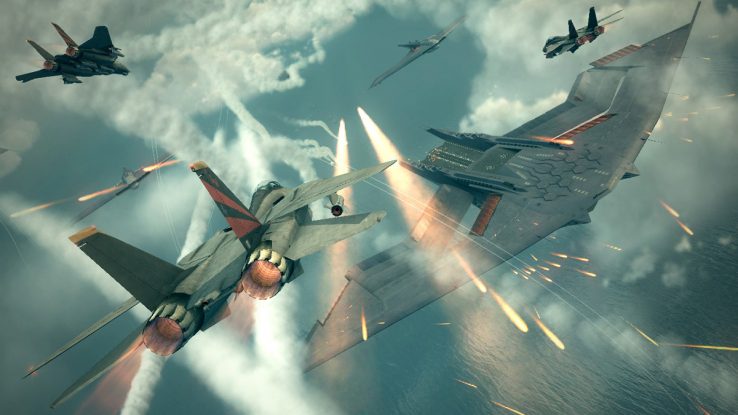
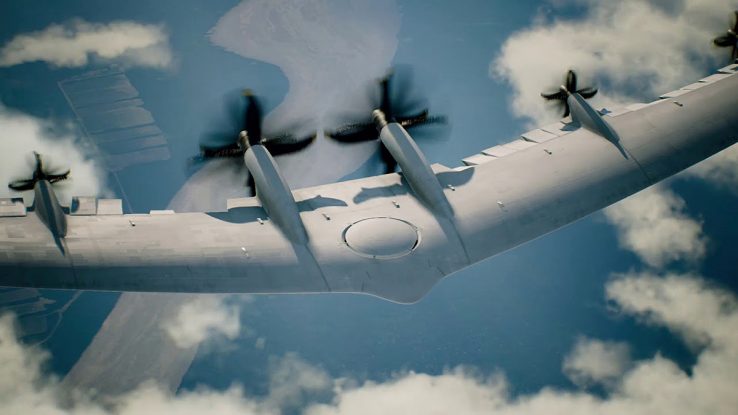

Artists have given their on take on the trope. Here are examples by “AoiWaffle0608“, Mike Doscher, M.L. Hopp, Jakub Javora and Alex Pushkarev.
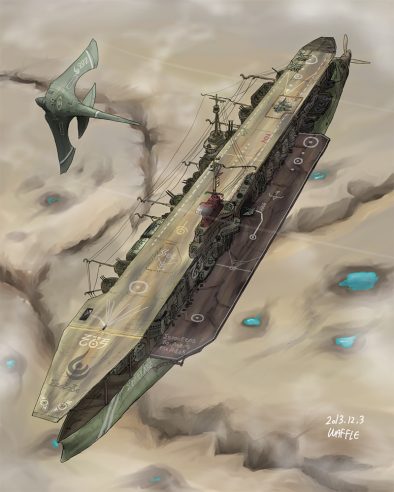
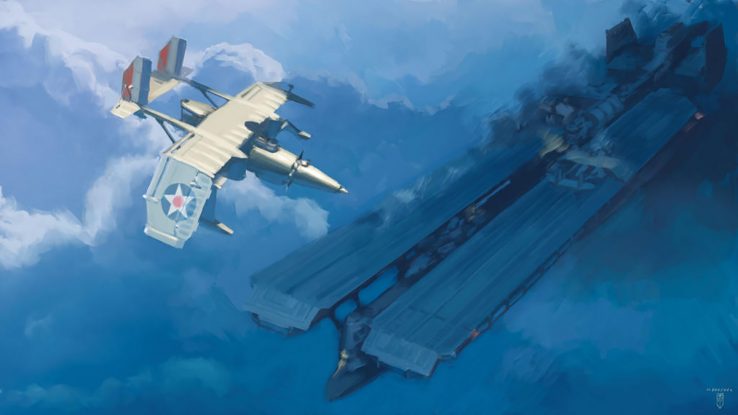
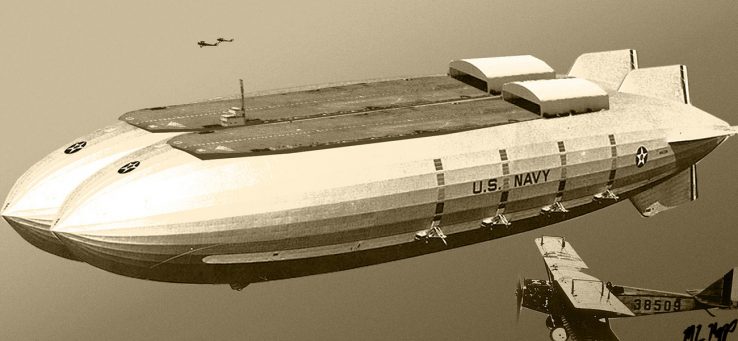
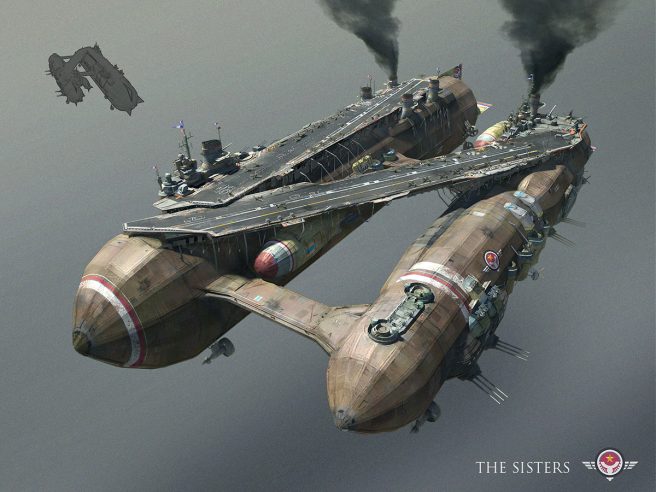
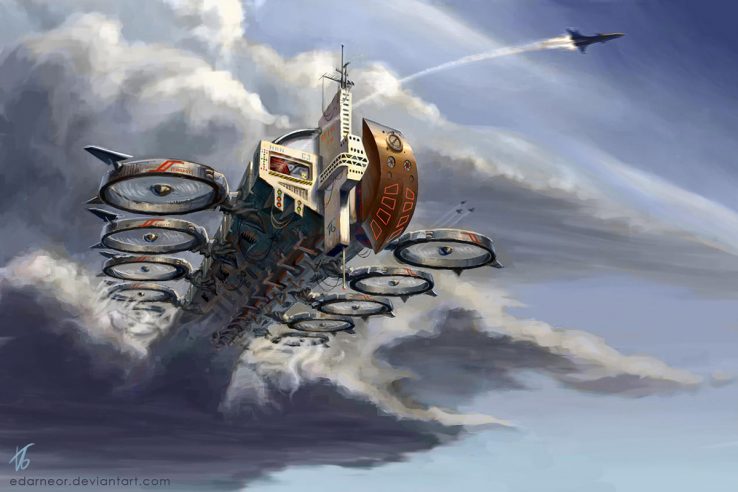

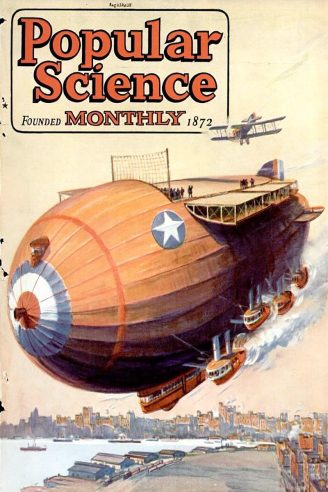

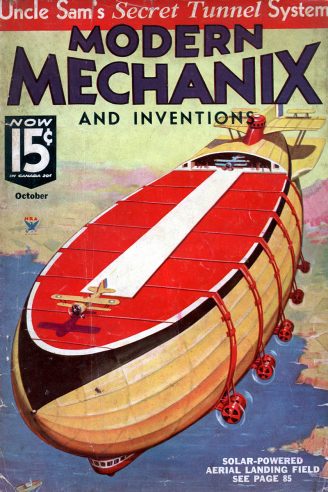
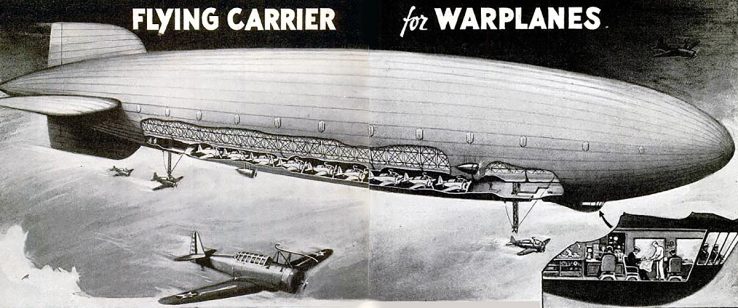
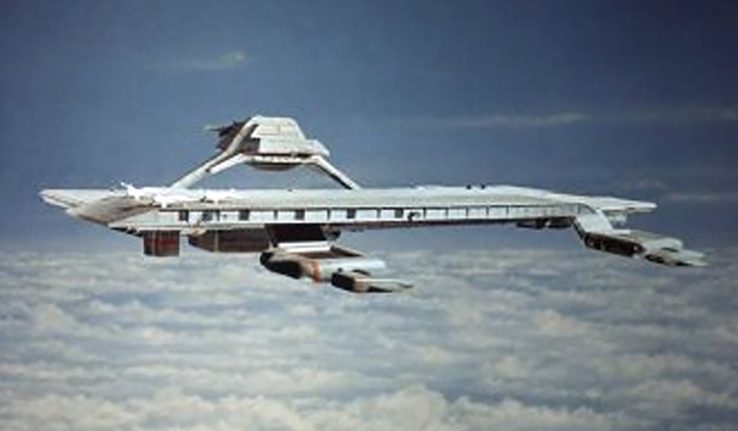


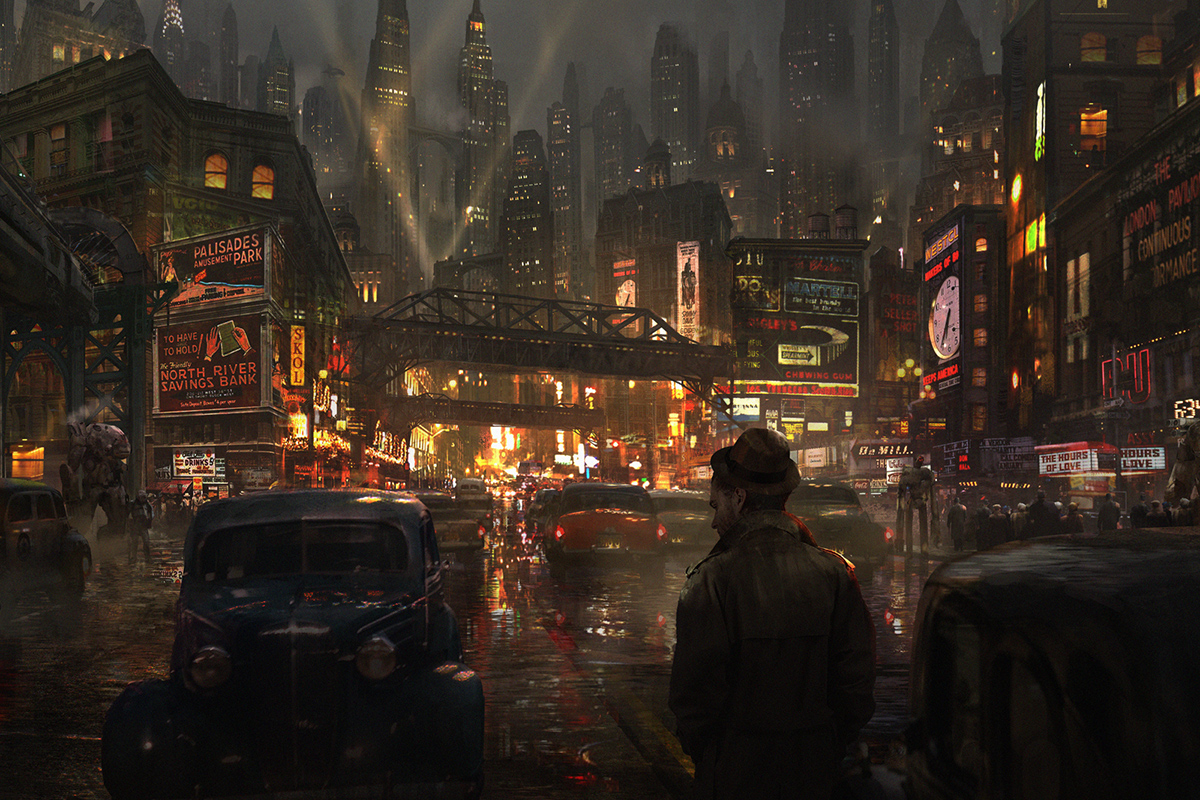
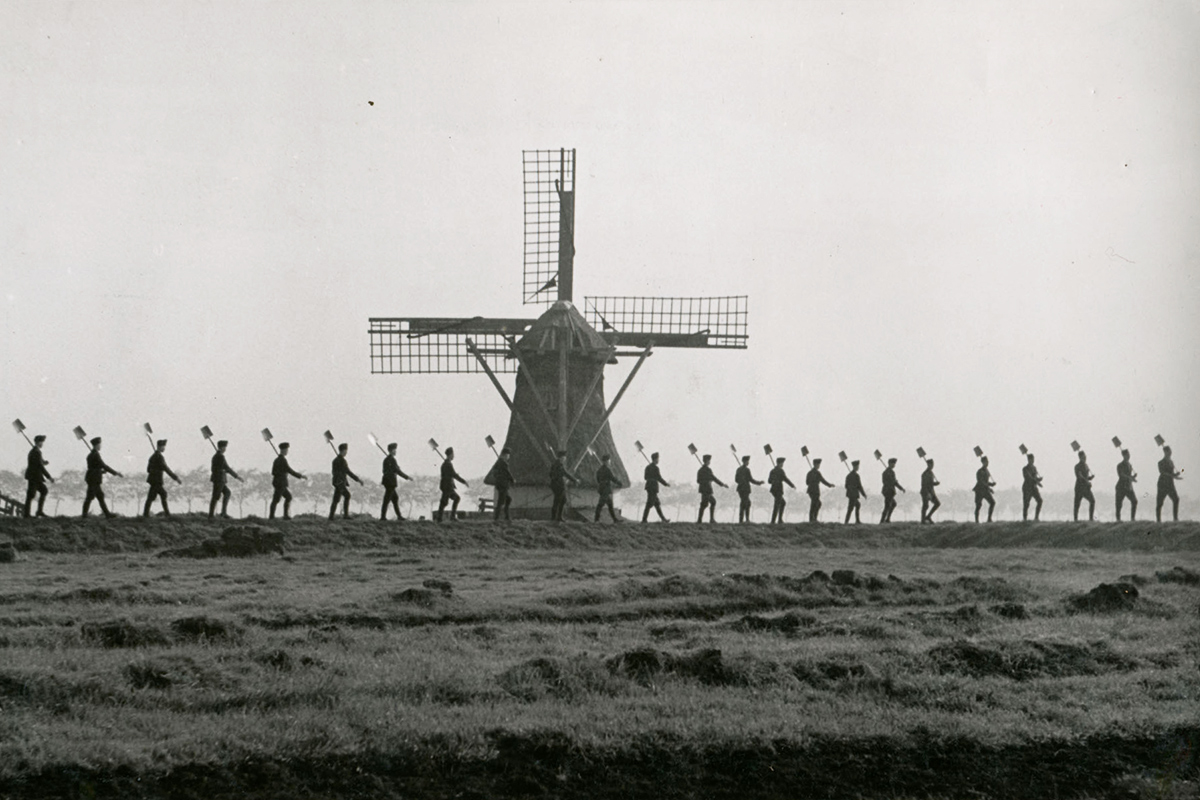
10 Comments
Add YoursGreat article. I am always fascinated by motherships.
Many thanks for this. All the NWM articles are interesting, but this one particularly fascinates me.
My own Work-in-progress is a Dieselpunk trilogy with a WW2-era aircraft-carrier that flies itself using anti-gravity, a fleet of biplane-carrying airships like the Akron and Macon but even bigger, and entire cities of flying skyscrapers! I never do things by halves…
Thank you both!
There’s a horrendously trashy (but still somehow fun) series of thriller novels called Black Eagle Force that features mini-fighters in a flying aircraft carrier.
There was another fictional one. There is a season three episode of the ’67 SpiderMan series called ‘Sky Harbour’. https://www.imdb.com/title/tt0827429/
https://www.dailymotion.com/video/x3zi589 to watch the episode (feel free to remove the link(s) if you want though)
I would add Crimson Skies (both tabletop and PC game) to the list of Zeppelin aircraft carrier examples.
This reminded me of the Anime “Last Exile” which had airships where they launched planes from as a primary story driver. (it’s been years since I saw it so I may be misremembering it)
Have we all forgotten about Disney’s TaleSpin with the AirPirates?
I’d add the 2006 Japanese anime series “Simoun” – the flight technology is magical/divine/arcane, but the pilot characters are based on an aircraft carrier converted from a luxury airliner.
There’s also the Skies of Fire comic series in the Zeppelin aircraft carrier arena.